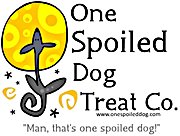As the world grows increasingly eco-conscious, sustainability is becoming a cornerstone of consumer decision-making—even in the pet care industry. In 2025, dog treats are no longer just about flavor or nutrition; they’re about minimizing environmental impact and creating a more sustainable future. Pet owners are driving this change, seeking eco-friendly options that reflect their values and support the health of their furry companions and the planet.
Why Sustainability Matters in Pet Care
Pet parents today view their dogs as family members and are keen to align their pets’ diets with their personal values of environmental stewardship and ethical consumption. The pet food market, valued at over $100 billion, has responded with an array of sustainable dog treat options that meet these expectations.
Sustainability in dog treats revolves around three key areas:
- Low-impact ingredient sourcing.
- Eco-conscious production practices.
- Environmentally friendly packaging.
Key Trends in Sustainable Dog Treats
-
Alternative Protein Sources
Traditional animal proteins, like beef and chicken, are resource-intensive to produce, contributing significantly to deforestation, greenhouse gas emissions, and water depletion. In 2025, alternative protein sources are redefining dog treats: - Insect Protein: Crickets, mealworms, and black soldier fly larvae are nutrient-dense and require minimal resources to farm. They’re rich in protein, omega fatty acids, and essential amino acids.
- Plant-Based Proteins: Chickpeas, lentils, and quinoa are now common in grain-free dog treats, offering high-quality protein while appealing to vegan or vegetarian pet owners.
-
Upcycled Ingredients
The upcycling trend reduces food waste by using by-products or surplus items to create dog treats. Examples include: - Spent Grains: Leftover grains from beer brewing, repurposed into fiber-rich treats.
- Juicing Pulp: Nutrient-packed vegetable and fruit pulp adds flavor and vitamins to dog snacks.
Organizations like the Upcycled Food Association certify these products, making it easier for pet parents to support sustainable brands.
-
Locally Sourced Ingredients
By using ingredients grown nearby, companies minimize the carbon footprint of transportation. Treats made with regionally grown sweet potatoes, apples, or blueberries are fresher, support local economies, and reduce environmental impact. -
Regenerative Agriculture
Moving beyond sustainability, regenerative agriculture restores soil health, increases biodiversity, and combats climate change. Brands sourcing from regenerative farms offer ingredients like pasture-raised beef and organic produce that are healthier for both dogs and the planet. -
Eco-Friendly Packaging
Single-use plastics are a major environmental concern. In 2025, many dog treat brands are adopting: - Biodegradable materials.
- Compostable packaging.
- Recyclable pouches or reusable containers.
Some companies are even experimenting with edible packaging or algae-based materials to further reduce waste.
-
Transparent Supply Chains
Pet owners want to know the origin of their dog’s food. Brands that provide detailed information about sourcing, farming practices, and ethical labor gain trust and loyalty.
The Health Benefits of Sustainable Treats
Sustainability in dog treats doesn’t just benefit the environment—it also promotes better health for pets.
-
Whole, Natural Ingredients:
Sustainable treats often exclude fillers, artificial additives, and by-products, resulting in healthier snacks that are easier for dogs to digest. -
Nutritional Value:
Ingredients like sweet potatoes, blueberries, and kale are packed with antioxidants, vitamins, and fiber. Insect proteins and plant-based options deliver essential nutrients while being hypoallergenic. -
Targeted Health Benefits:
Sustainable treats often address specific health concerns, such as joint support (with omega-3s), digestion (with fiber and probiotics), or weight management (with low-calorie, nutrient-dense ingredients).
Sustainability as a Competitive Edge
Brands that embrace sustainability are finding it to be a significant marketing advantage. Certifications such as “Organic,” “Non-GMO,” or “Rainforest Alliance Certified” resonate with eco-conscious consumers. Transparency about sustainable practices builds trust and differentiates these brands in a crowded market.
The Future of Sustainable Dog Treats
The sustainability movement in the pet care industry is just beginning. Here’s what the future holds:
-
Lab-Grown Meat:
As technology advances, lab-grown meat may provide a cruelty-free, environmentally friendly alternative to traditional animal proteins. -
Innovative Packaging:
Algae-based or dissolvable films could revolutionize treat packaging, eliminating waste entirely. -
AI and Customization:
AI tools may help develop personalized, sustainable treat formulas tailored to individual dogs' nutritional needs and environmental impact. -
Scaling Up Regenerative Agriculture:
More companies will likely adopt regenerative farming to address both sustainability and ingredient quality.
How Pet Owners Can Support Sustainability
Pet owners can make an impact by choosing brands that prioritize sustainable practices. Look for:
- Clear ingredient lists featuring eco-friendly options like upcycled or local ingredients.
- Certifications that verify ethical and sustainable sourcing.
- Innovative packaging that reduces waste.
Conclusion
Sustainable ingredients are transforming the dog treat industry, aligning with the values of environmentally conscious pet owners in 2025. From alternative proteins to upcycled ingredients and eco-friendly packaging, these changes are paving the way for a greener, healthier future.
By supporting sustainable dog treat brands, pet parents are making choices that benefit their dogs, the planet, and future generations. In this evolving landscape, sustainability isn’t just an option, it’s an essential part of how we nourish and care for our furry friends.





